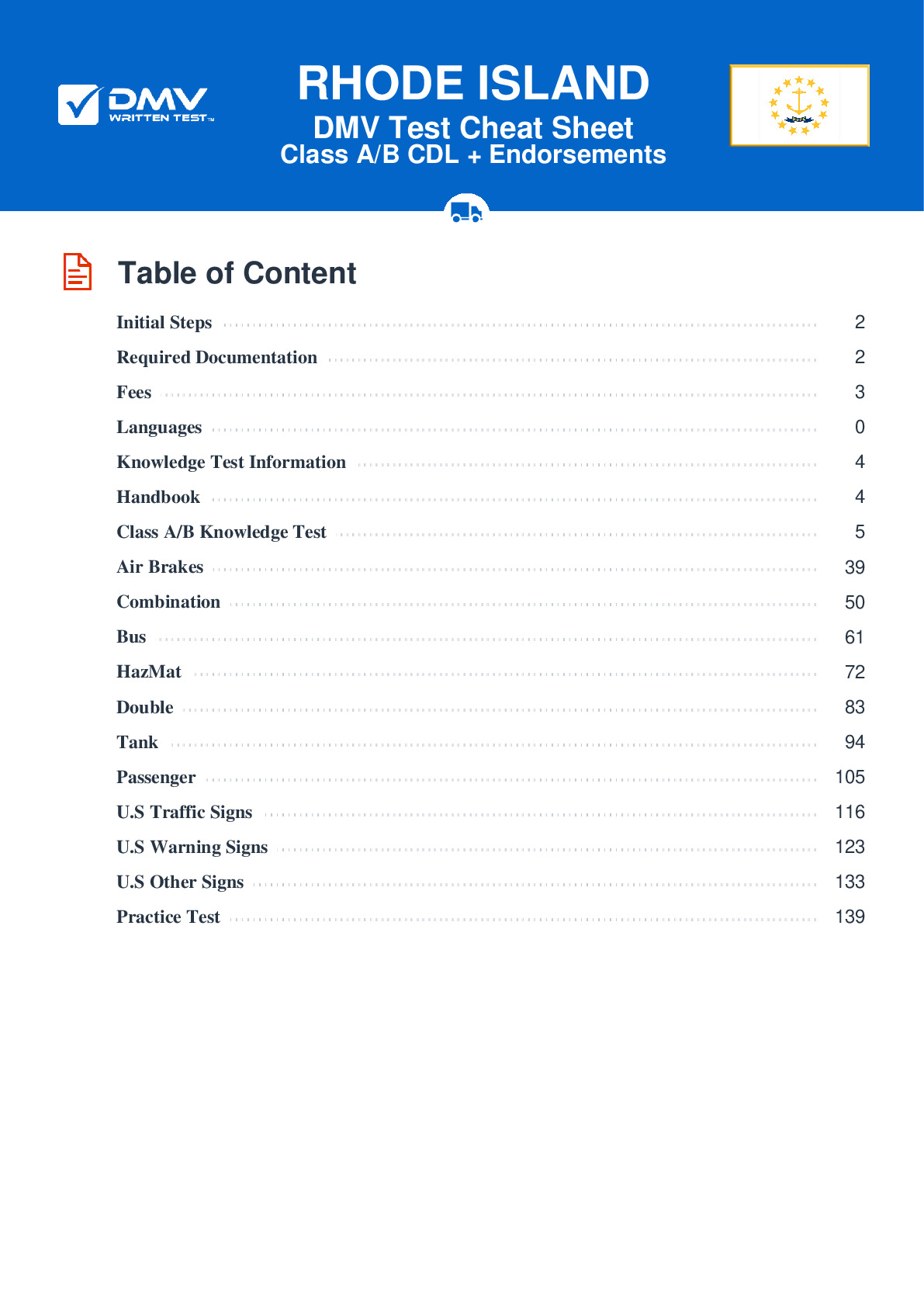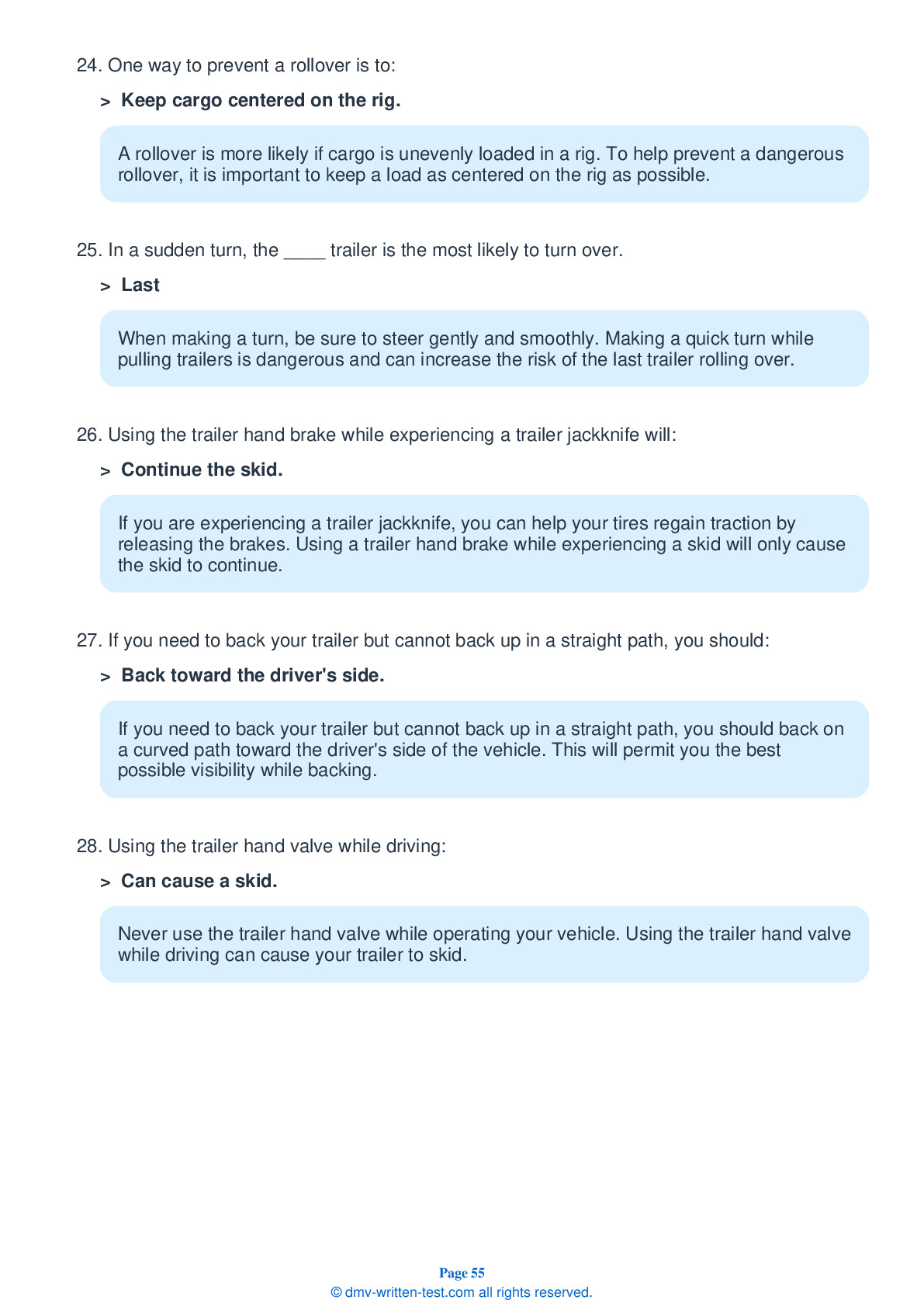Combination
All applicants who are applying for a Class A CDL should be prepared to take the Combination test. This test covers information found in Section 6 of the Commercial Driver License Manual. Section 6 provides the information needed to safely operate tractor-trailers, doubles, triples, and straight trucks with trailers. The test is made up of 20 multiple-choice questions, and applicants will need to correctly answer a minimum of 16 questions to pass. The Combination test is not a replacement for the Double/Triple endorsement test.
Number of Question
Passing Score
1. Which of the following will not help prevent a rig from rolling over?
Explanation
To help prevent a rig from rolling over, you should keep the weight of the cargo as close to the ground as possible when loading. You should also drive slowly around turns.
2. How much space should be between the upper and lower fifth wheel?
Explanation
Before a trip, be sure to inspect all couplings. There should be no space between the upper and lower fifth wheel.
3. Maintain a following distance of at least ____ for every 10 feet of your vehicle if you are traveling at a speed under 40 mph.
Explanation
At speeds below 40 mph, you should allow at least one second of following distance for every 10 feet of your vehicle. Follow the same formula when traveling at faster speeds, then add one additional second to your following distance. Remember that larger vehicles require more space to stop than smaller vehicles.
4. If you use the trailer hand brake while your trailer is skidding, it will:
Explanation
If you are experiencing a trailer jackknife, you can help your tires regain traction by releasing the brakes. Using a trailer hand brake while experiencing a skid will only cause the skid to continue.
5. In an empty combination vehicle, the stiff suspension springs and strong brakes will have:
Explanation
An empty combination vehicle will come to a complete stop more slowly than a fully-loaded vehicle. With less weight in a trailer, the stiff suspension springs and strong brakes will have lower traction than they would if the vehicle carried more weight.
6. The trailer hand valve:
Explanation
Never use the trailer hand valve while parking because doing so may release the air pressure from the braking system, releasing the brakes that are holding the vehicle in place. Instead, use the parking brake or wheel chocks.
7. Keeping cargo low can:
Explanation




